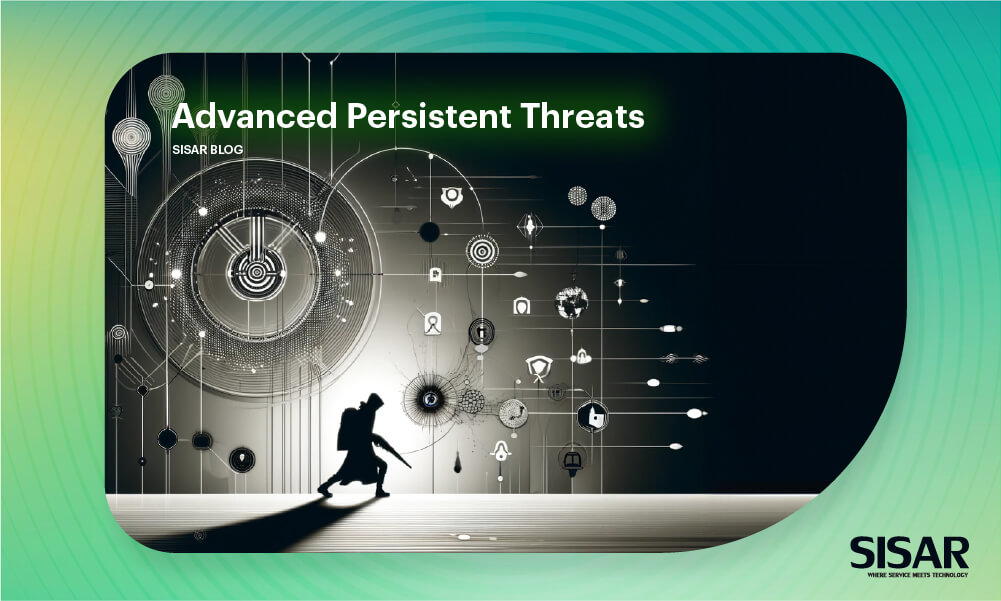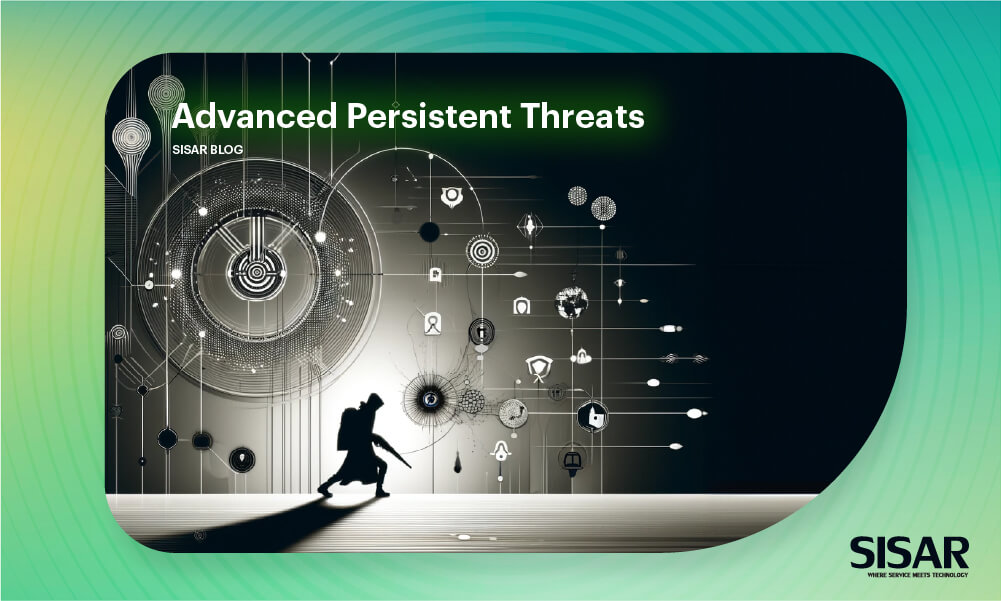In today’s interlinked digital landscape, organizations face increasingly sophisticated cyber threats, with Advanced Persistent Threats (APTs) posing one of the most significant risks. Skilled adversaries orchestrate stealthy, targeted APTs with the intention of infiltrating networks. They extract sensitive data from the compromised networks.

These adversaries aim to maintain long-term access to the networks. Preventing APTs requires a multi-layered approach that combines proactive security measures, threat intelligence, and continuous monitoring. Skilled adversaries orchestrate stealthy, targeted APTs with the intention of infiltrating networks.
They extract sensitive data from the compromised networks.
These adversaries aim to maintain long-term access to the networks.
1. Understanding Advanced Persistent Threats (APTs)
1.1 What are APTs?
Advanced Persistent Threats (APTs) are sophisticated cyber-attacks characterized by their stealth, persistence, and targeted nature. APT attacks differ from traditional cyber-attacks because they are not exploitative or radom. Skilled adversaries, often with nation-state backing or organized crime connections, carefully plan and execute these attacks. This planning results in highly targeted and sophisticated cyber operations.
1.2 Key Characteristics of APTs
- APT actors use stealth techniques to avoid detection, allowing them to stay hidden within the target network. They often remain undetected for extended periods. This stealthy approach is a hallmark of their operations.
- APTs aim to establish a long-lasting presence within the target environment. Their design facilitates this prolonged foothold. This persistence allows attackers to remain undetected.
- Over time, they gradually exfiltrate sensitive data. The attackers aim to extract as much data as possible. Their objective is to achieve this without detection.
- The attackers aim to maximize data extraction. They strive to remain undiscovered while doing so.
- Targeted Attacks: APT attacks target specific organizations, industries, or individuals. Attackers conduct thorough reconnaissance to gather intelligence before starting an attack.
- APT actors use advanced techniques to navigate around security controls. Techniques include zero-day exploits, which exploit previously unknown weaknesses. They also develop custom malware tailored for specific attacks.
- Furthermore, they apply social engineering tactics to deceive and manipulate targets. These strategies enable them to gain unauthorized access to systems and networks.
1.3 Common APT Attack Vectors
- Spear Phishing: APT actors frequently start their attacks with spear phishing emails. They target specific individuals within an organization. The emails contain messages tailored to appear relevant to the recipients.
These messages contain malicious attachments or links. The goal is to deceive the individuals into compromising their own security.
- Watering Hole Attacks: APT actors target legitimate websites visited by employees or customers of their intended organization. They implant distinctive malicious code within these websites.
This code aims to exploit weaknesses in the systems of visitors. The exploitation allows them to compromise visitors’ systems. Their strategy involves using trusted sites as a vector for their attacks.
- Supply Chain Compromise: APT actors sometimes penetrate the networks of trusted third-party vendors or suppliers. They use this access as a backdoor into the target network of organization.
This indirect approach allows them to bypass direct security measures. Their infiltration of these third parties exploits trusted relationships. The ultimate goal is gaining unauthorized access to the target network of organization.
- Insider Threats: APTs can include insider threats, where malicious insiders or compromised employees play a role. These insiders facilitate the attack by giving access or sensitive information to external adversaries.
They become a critical component in the success of the operation. This insider involvement allows external adversaries to bypass external defenses more easily. The provision of access or sensitive information significantly aids in the execution of the attack.
2. Strategies for Preventing Advanced Persistent Threats APTs
2.1 Implement a Defense-in-Depth Approach
- Layered Security Controls: To create a robust defense-in-depth strategy, deploy multiple layers of security controls. These controls should include firewalls and intrusion detection systems (IDS). Additionally, incorporate endpoint protection and data encryption.
This multi-layered approach strengthens the overall security posture. Each layer serves as a barrier against potential threats, enhancing protection at various levels.
- Network Segmentation: Isolate your network into segmented zones to restrict attackers’ lateral movement within the network. This segmentation helps contain the impact of potential breaches. By dividing the network, you create barriers that attackers must overcome to access different areas.
This strategy reduces the risk of widespread damage from a single breach. Each segmented zone acts as a controlled environment, limiting unauthorized access and enhancing security.
2.2 Enhance Threat Detection and Response Capabilities
- Continuous Monitoring: Implement continuous monitoring solutions to detect suspicious activities, anomalous behavior, and indicators of compromise (IoCs) within your network in real-time.
- Threat Intelligence: Leverage threat intelligence feeds and threat hunting techniques to proactively identify APT campaigns, tactics, techniques, and procedures (TTPs) targeting your organization.
2.3 Strengthen Access Controls and Verification
- Least Privilege Principle: Grant permissions only to the users they need to perform their job functions. Thereby, you adhere to the principle of least privilege. Likewise, this method reduces the likelihood of unauthorized access.
By limiting user permissions, you reduce the potential for misuse or exploitation of access rights. Implementing this principle ensures that users have just enough access to fulfill their roles, thereby enhancing overall security.
- Multi-Factor Verification (MFA): Implement Multi-Factor Verification (MFA) across all critical systems and applications. This adds an extra layer of security. By doing so, you prevent unauthorized access in the event of credential compromise.
MFA requires users to provide multiple forms of verification, significantly reducing the risk of unauthorized entry. This method strengthens the security of critical systems and applications against potential breaches.
2.4 Conduct Regular Security Awareness Training
- Employee Education: Offer comprehensive security awareness training to all employees, contractors, and third-party partners. This training aims to increase awareness of common APT attack vectors, phishing techniques, and information security best practices.
By educating these groups, you enhance their ability to recognize and respond to security threats effectively. This proactive approach fosters a culture of security mindfulness, significantly reducing the risk of successful cyber attacks.
3. Responding to Advanced Persistent Threats APT Incidents
3.1 Develop an Incident Response Plan
- Incident Response Team: Form an incident response team that includes representatives from IT, security, legal, and executive leadership. This team will coordinate response efforts in the event of an APT incident.
By bringing together diverse expertise, the team can address the technical, legal, and strategic aspects of a security breach. This coordinated approach guarantees a comprehensive response to APT incidents. It effectively mitigates their impact on the organization.
- Incident Response Plan: Develop a comprehensive incident response plan that outlines procedures for detecting APT attacks. Include steps for containing and mitigating these attacks within the plan.
Add recovery strategies to address the aftermath of an APT incident. Incorporate communication protocols and escalation procedures into the plan. Also, ensure the plan covers legal considerations related to APT attacks.
3.2 Conduct Post-Incident Analysis
- Forensic Investigation: Conduct thorough forensic analysis following an APT incident to identify the root cause, extent of compromise, and potential data exfiltration.
- Lessons Learned: Document the lessons learned from the incident response process. Use these insights to improve future security posture. This includes updating policies and procedures.
Also, make necessary adjustments to security controls. Each step contributes to strengthening defenses of the organization against future threats.
Security risks escalate as threat actors use sophisticated techniques like phishing attacks to gain initial access. These attacks exploit weaknesses in operating systems and rely on influencing user behavior. Once inside, attackers aim to stay undetected, quietly gathering and extracting valuable data.
To defend against APTs, organizations must enhance their security measures. Implementing strict access controls and keeping operating systems up-to-date are crucial steps. Additionally, educating employees about the dangers of phishing and promoting vigilant behavior are key to preventing initial breaches.
An effective incident response plan is essential for swiftly addressing breaches. This plan should include steps for detection, containment, and mitigation, reducing potential damage. Security teams must learn from each incident, updating their strategies and controls to better defend against future threats.
Conclusion – Advanced Persistent Threats
Preventing Advanced Persistent Threats (APTs) demands a proactive approach. This strategy must address weaknesses in people, processes, and technology. Each element plays a critical role in a comprehensive defense strategy.
Understand the characteristics of APTs to mitigate the risk of attacks. Similarly, enact stringent security protocols to safeguard against these threats.
Foster a culture of vigilance and resilience within the organization. These actions help safeguard critical assets against evolving cyber threats. Together, they strengthen the defenses of organization against APT attacks.







